This website uses cookies so that we can provide you with the best user experience possible. Cookie information is stored in your browser and performs functions such as recognising you when you return to our website and helping our team to understand which sections of the website you find most interesting and useful.
Lamborghini Urus review: explosive power
By Adam Hay-Nicholls | 14 March 2022 | Cars & Yachts, Sport
We put this stunning new model through its paces on a daring drive to the top of volcanic Mt Etna – but can this powerful supercar really take the heat?
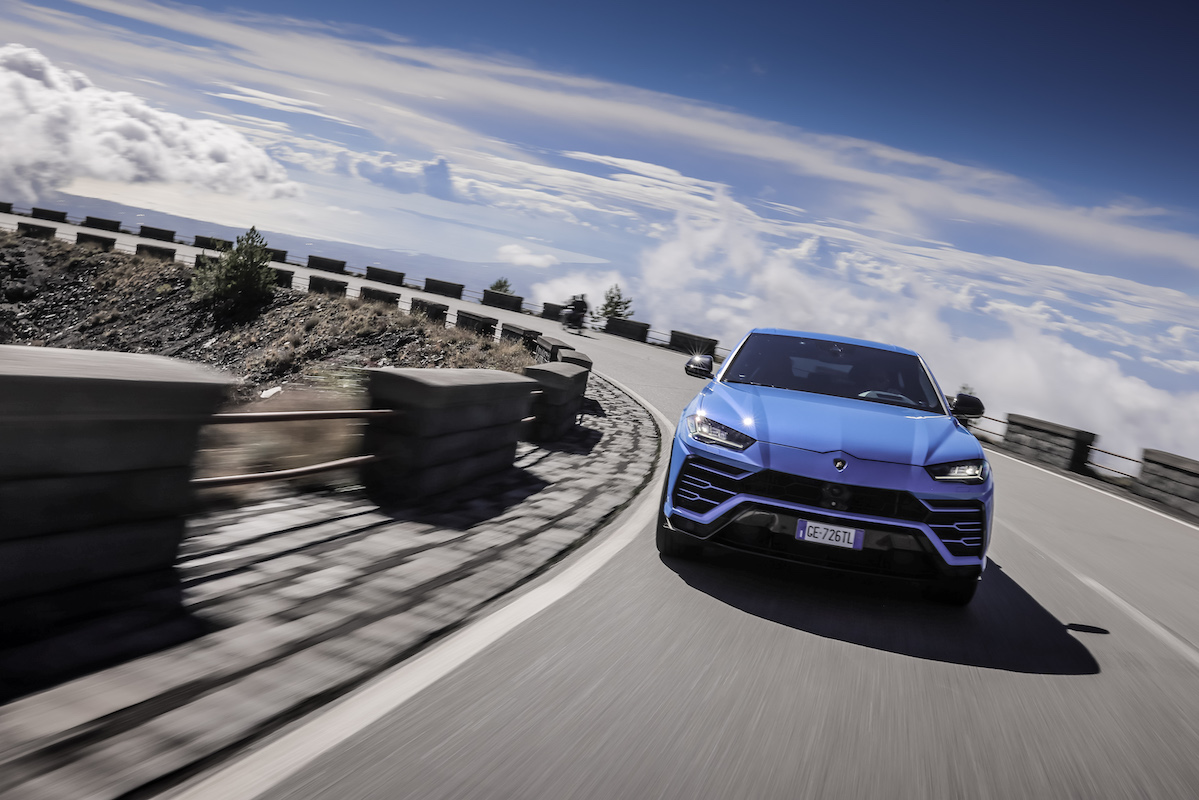
‘Volcanic’ may be a suitable word to describe a Lamborghini’s performance. Its vast engine’s combustion chambers are the scene of violent energy, the earth shakes, and flames erupt from the exhausts. It makes guttural roars or devilish hisses and, with terrifying force, punches a hole through nature at 190mph. The steep slopes of Mount Etna, therefore, sound like the ideal location to test the marque’s high-riding four-wheel-drive model, the £172,000 Urus. Launched in 2018, the 641bhp super-SUV instantly claimed its status as the fastest car of its type in the world.
The Urus is as capable off-road as it is round a racetrack – though you’re more likely to find it crawling around Mayfair’s Berkeley Square. Yet Etna, which rises 3,357m above the east of the island of Sicily, feels like its spiritual heartland. In Greek mythology, the deadly serpentine monster Typhon was trapped under the mountain by Zeus, and the forges of Hephaestus – god of metallurgy and fire – were said also to be underneath it.
This volcano is extremely active and has been for 500,000 years. In fact, it’s grown 30m in the last six months alone, such have been its recent eruptions. There have been 56 explosive activities just this year. The magma chamber is five miles deep and can spurt lava as high as a mile in the air. Lower down, fertile volcanic soil makes for superb vineyards and olive groves (of the former, I recommend Pietradolce’s smoky yet crisp vintages).
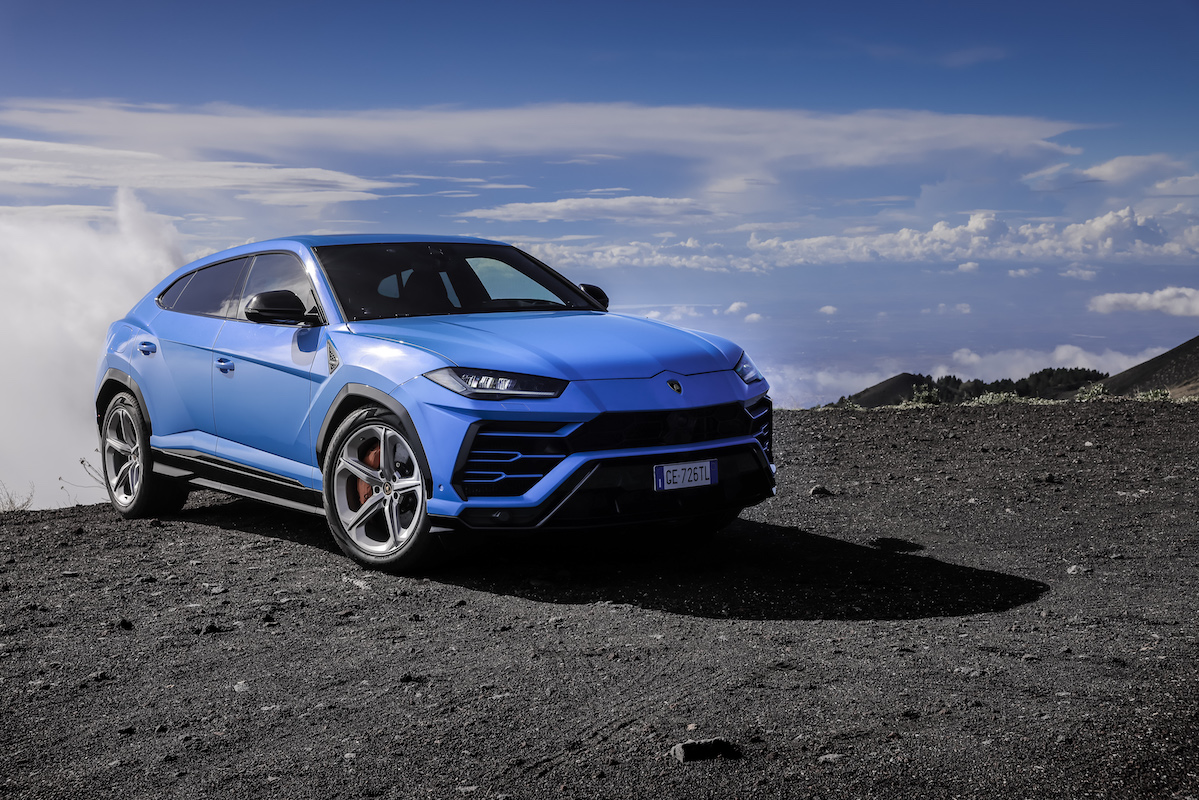
The glamorous coastal town of Taormina is an hour’s drive north, which is where we’ve based ourselves. Its opulent San Domenico Palace hotel, part of the Four Seasons group, has hosted Hollywood royalty since the earliest days of the silver screen, including Greta Garbo, Marlene Dietrich, Ingrid Bergman and Sophia Loren.
It also attracted some of the 20th century’s most illustrious writers, like Truman Capote, John Steinbeck, Tennessee Williams and Rudyard Kipling. It was the concierge at the San Domenico Palace that advised Francis Ford Coppola on where to shoot parts of the Godfather trilogy, here in the province of Messina.
Art, mafia, mythology, the rich and famous and, towering above these sybaritic scenes, an organic weapon of mass destruction. As I said – a fitting place to experience the Lamborghini Urus.
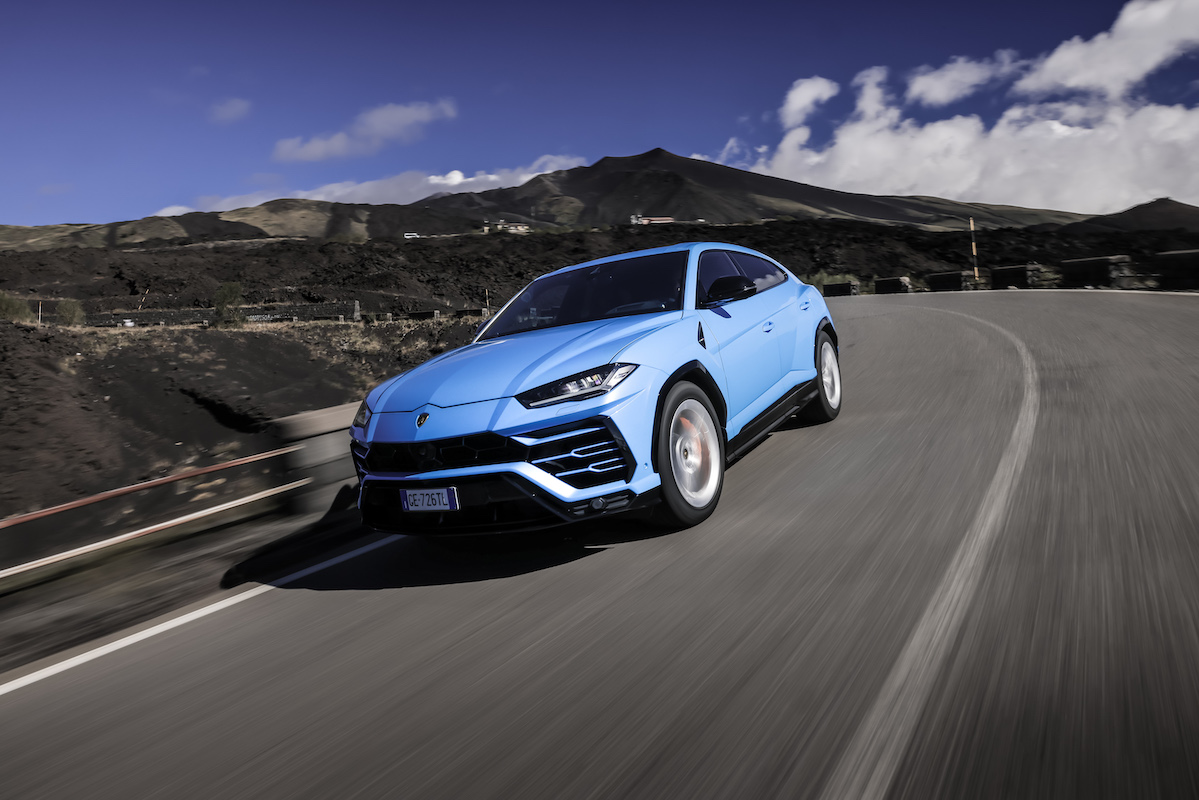
Revving up the drama
As we pull off the highway towards Catania and ascend the Strada Provinciale 92, wisps of ash start getting kicked up by the Urus’ gigantic tyres. The higher we go, the blacker the road gets, a dark cloud engulfing our mirrors. Cars ahead have a trail behind them like that of a bellowing Victorian locomotive.
The visibility in the sky is better, which is especially fortunate for two-time paragliding world champion Aaron Durogati, who’s joined our group. The 35-year- old Italian has been soaring through the air since he was six and, sponsored by Lamborghini as well as Red Bull, he climbed the mountain ahead of us and lifted off to add even more awe to the picture.
The Urus grips like Kratos on the Sicilian tarmac. We steer off road, across the basalt, turning off the electronic stability to throw the SUV into a dramatic series of slides as we tear up Etna’s eastern slopes. Someone sets out some red cones around which we pirouette the Urus with a ‘Scandinavian-flick’. Some people, usually with hot-rodded hatchbacks, choose to burn their rubber in car parks. This is next level. To those revving their Aventadors at 20mph around Harrods; may I suggest you use a little more imagination.
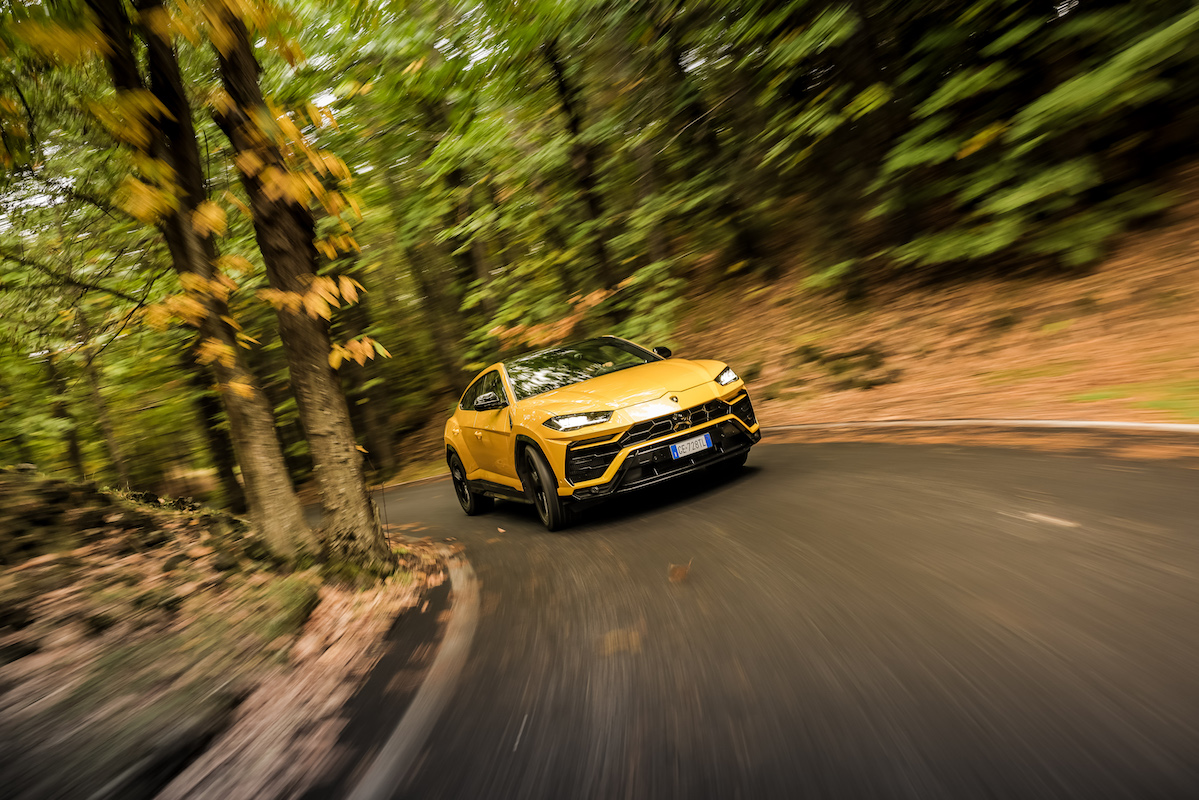
Lava spilled down the path we’re on as recently as last August. As the rocks get bigger, we raise the ride height 30mm by putting the car in Terra mode. The 21in wheels find greater traction, the suspension adapting to what is a most incongruous challenge for a car with a raging bull on its badge. Mars and Moon Rovers are tested here, and I can see why. As we emerge above the clouds the hills of black ash, some coated with fresh snow, look like they’re from another planet. Ash is an insulator, so even in summer you can find ice just below the surface. Dig a foot deep, though, and you can feel the heat of the volcano.
Access to Etna’s summit is restricted, so we park the Urus and make the final part of our ascent on foot towards its tallest point: the southeast crater. There are five distinct craters and this is the newest (‘born’ in 1978) and most active, a spill of yellow sulphur visible on its flank. A constant puff of white smoke is blowing out of the crater. It looks as though this is where God puts out his cigar.
It is a glorious and humbling sight. Yet, volcanic eruptions are highly polluting. As well as raining ash, they emit huge volumes of carbon dioxide. A single small eruption from Etna lasting just a few hours might add many millions of tonnes of greenhouse gases to the atmosphere.
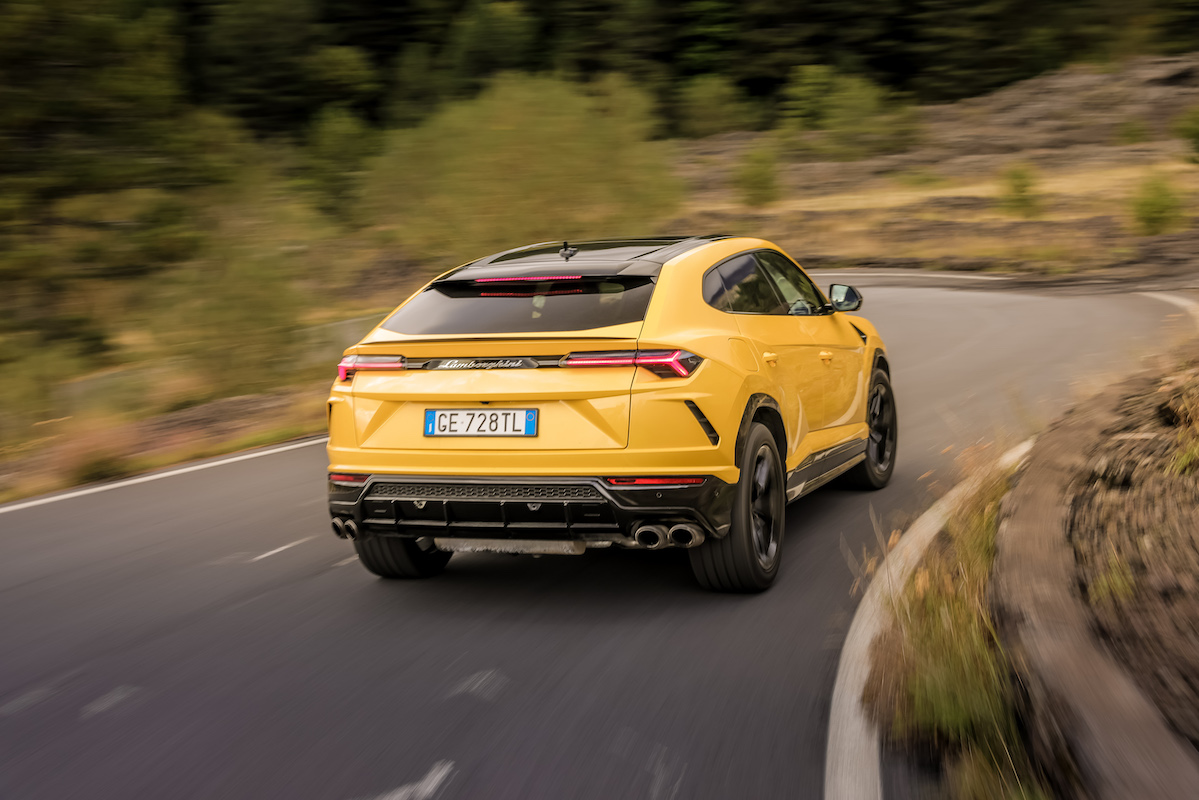
Gear change
As the temperature of the Earth and the level of its oceans rises to a critical level, Lamborghini is about to change direction. Supercar companies are in the same boat as the giant mainstream manufacturers. Unable to sell automobiles powered by internal combustion engines from 2030 in the UK and elsewhere, they’re turning to alternate means of propulsion.
Lamborghini is investing an extra £1.26bn into the company between now and 2024 to electrify all of its models. In three years, every new Lambo will be either hybrid or fully-electric. The emissions across its fleet will be cut by 50%, and its factory will be carbon neutral.
The power will still be great – maybe greater – and the speeds will continue to thrill, but there will be no more flames and, irrevocably and inconceivably, no more roar. A silent Lambo? That’d be like Miles Davis without a trumpet or a judge without a gavel. Italy without Andrea Bocelli. One of the senses will be bereft.
So, let’s savour what we have while we still have it. Floor the twin-turbo V8 and frighten the birds. Blast back down the piste of the volcano and make the pipes spit flames. We haven’t got long left.







